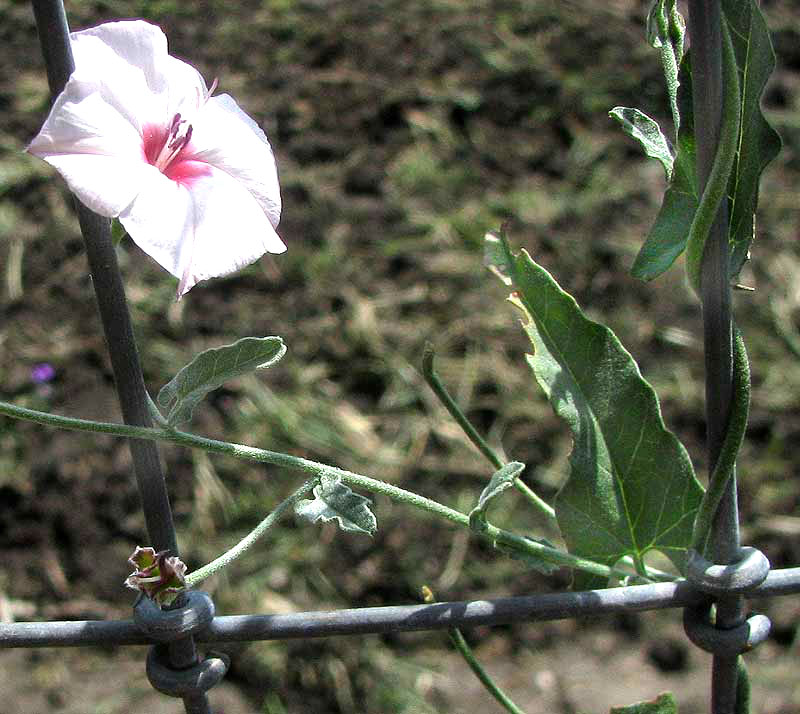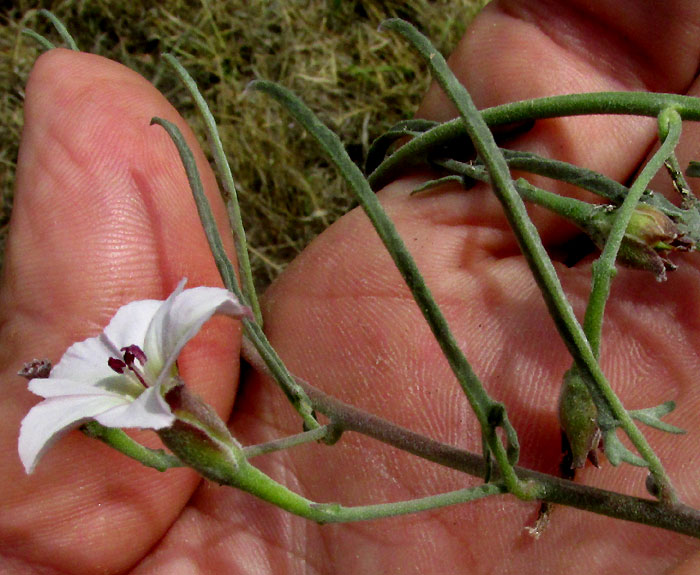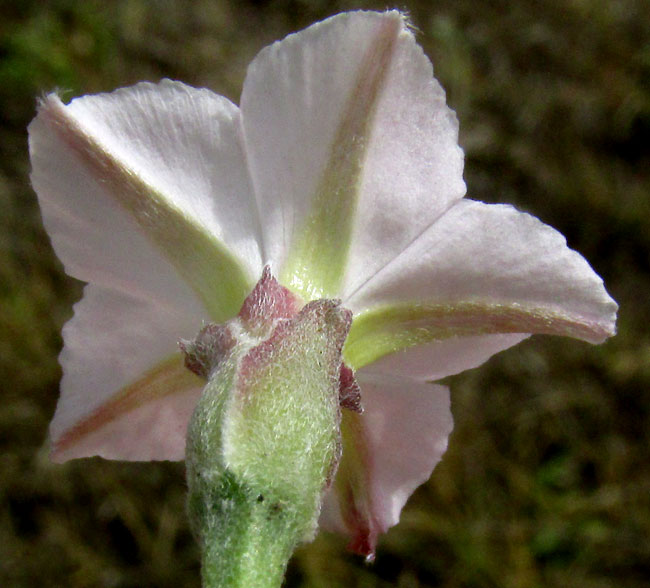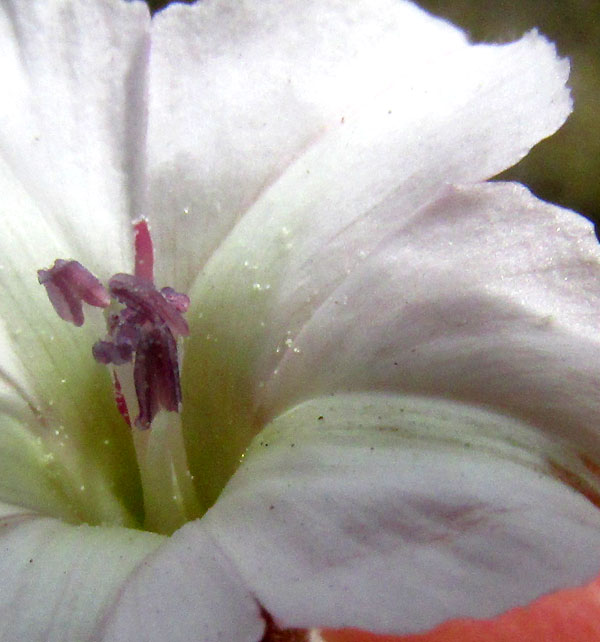Excerpts from Jim Conrad's
Naturalist Newsletter

from the the September 23, 2012 Newsletter issued from the valley of the Dry Frio River in northern Uvalde County, southwestern Texas, on the southern border of the Edwards Plateau; elevation ~1750m (~5750 ft); N29.62°, W99.86°; USA
TEXAS BINDWEED
In the Yucatan we had so many beautiful and remarkable members of the Morning-Glory Family that I got especially sensitized to the group. Therefore I was delighted when a morning-glory species I'd not seen before turned up tightly twining around the wire fence around my neighbor's pasture. You can see it above.
The blossom is small for a morning-glory, only a little over an inch across (3cm), and just look at how slender the arrow-shaped leaves are on the right, and notice how the leaf bases bear long "ears." A closer look at a leaf base is shown below:

Such arrow-shaped leaves with narrow, backward-pointing ears, or "basal lobes," are said to be "hastate." And notice that these hastate leaves are particularly hairy with sharp hairs lying low against the leaf's surface. These are important field marks for this species. Another field mark is shown in the flower close-up below:

The thing to notice there is that the female style is divided into two long, slender stigmas. Morning-glories that are members of the big genus Ipomoea have a spherical stigma very unlike this. Another field mark is the flower's unusual calyx with broadly overlapping sepals, shown below:

So, all these eye-catching field marks mean that here we have the Texas Bindweed, CONVOLVULUS EQUITANS, found in much of the arid US Southwest and northern Mexico. It's closely related to a much more widely spread and weedier Bindweed, Convolvulus arvensis, which we met in Oregon, but our Texas plant's leaves are much narrower. You can compare our Texas one with the more common weedy species at https://www.backyardnature.net/n/h/bindweed.htm.
Birds eat Texas Bindweed's seeds, pollinators visit its flowers and bugs eat its leaves, but the plant is really too small and inconspicuous to make much of an impact on the usual human mind. To get a kick from it you have to be looking for special things in obscure little corners.
entry dated June 16, 2022, issued from near Tequisquiapan; elevation about 1,900m, (6200 ft), ~N20.57°, ~W99.89°; Querétaro state, MÉXICO
BINDWEED IN MEXICO

At the grassy edge of an irrigated cornfield, scattered, small white flowers caught my eye. They grew from a sprawling vine-like plant with about a dozen fairly evenly spaced, straight stems radiating from a central point. It was an impressive growth form but amid the ground's clutter of grassblades and debris, the plant body was hard to see and effectively photograph, which is why a stem is presented above wrapped around my arm. Up close, an unexpected feature emerged:

The flower is typical of the Morning-Glory Family, the Convolvulaceae, but I'd not seen such very slender, almost needle-like leaves with narrow, backward-pointing lobes as this. Here's a closer look:

Notice that the leaves' bottom lobes are themselves lobed. Here's a better look at the flower's sepals and the interesting, greenish-fleshy "midribs" of their corolla lobes as seen from behind:

The stamens' anthers are purplish, on white filaments of unequal length. The corolla's tube is yellowish green inside:

Capsule-type fruits atop a long, straight peduncle and pedicel already were mature and splitting open to release seeds:

The seeds were large, hard and angular:

Despite all these distinctive field marks, it took awhile to figure out that this was the same Texas Bindweed species profiled at the top of this page. The problem was that the style of the Texas Bindweed, as seen in the third photo from the top of the page, is deeply divided into two long, slender stigmas. Our flower doesn't show that. Something must have chomped it off!
Then there were the extremely narrow leaves, much unlike our Texas plants. However now I see that in certain habitats the plants develop such leaves, presumably to cut down on water loss. Roundish objects present less surface area for water loss than flat ones.
In Texas, the name Texas Bindweed made sense, but down here it's worth noting that the species is distributed from Kansas to California and south through Mexico to Oaxaca in the south. It's as much a Mexican species as a US/Texas one. Outside the US, the English name usually chosen for the species is Field Bindweed or just Bindweed.